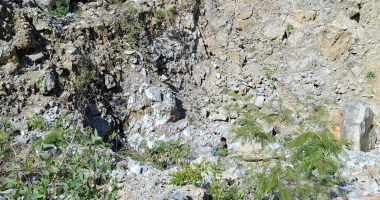Eagle Mountain Mining Ltd (ASX:EM2) has picked up evidence of high-grade gold, silver and lead mineralisation through fieldwork at its Silver Mountain project in Arizona which it believes could point to a porphyry or similar type structure.
Assays from the work included 64 grams per tonne (g/t) gold, 445g/t silver and 15% lead across a 0.5-metre vein; a 0.2-metre breccia zone holding 30.4g/t gold; a grab sample of 11.65g/t gold, 67g/t silver and 3% lead; and another containing 7.46g/t gold and 181g/t silver.
The mapping and sampling work also revealed porphyry indicators such as high-grade zones with phyllic alteration, and prospective structural orientations.
Eagle Mountain was also pleased to find evidence of a trend stretching more than one kilometre – yielding high grade samples – which connected historical mines.
The company emphasised the value of Silver Mountain’s underlying geology, as it sits along the Laramide Arc, a feature which hosts world-class porphyry copper mines such as Bagdad, Miami and Resolution. In addition, the project is also connected to a northeast-southwest prospective metallogenic belt hosting the United Verde and Iron King volcanogenic massive sulphide (VMS) historical mines.
Eagle Mountain CEO Tim Mason said the company was glad to find such high-grade targets in this jurisdiction.
“These targets are supported by the discovery of high-grade gold and silver-rich zones along significant geological trends, including one stretching well over 1km between historic mines,” he said.
“Sampling and mapping results suggest the high-grade features could be porphyry related mineralisation.
“These exceptional results complement our previously identified porphyry indicators: new outcrops of porphyry alteration have been identified, adding to all the other indicators of a porphyry system under cover.”
Eagle Mountain has been trading at 5.7 cents.









